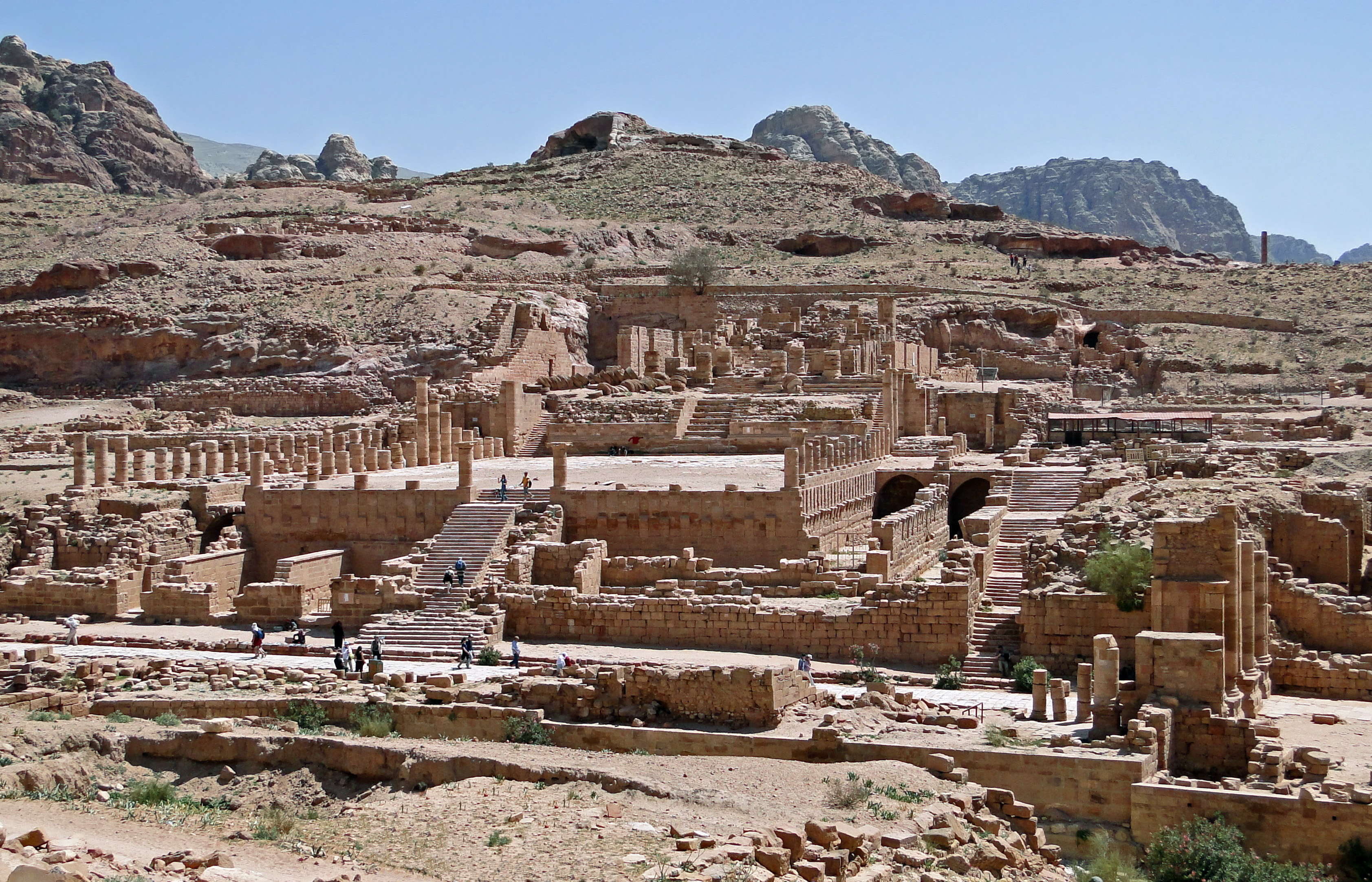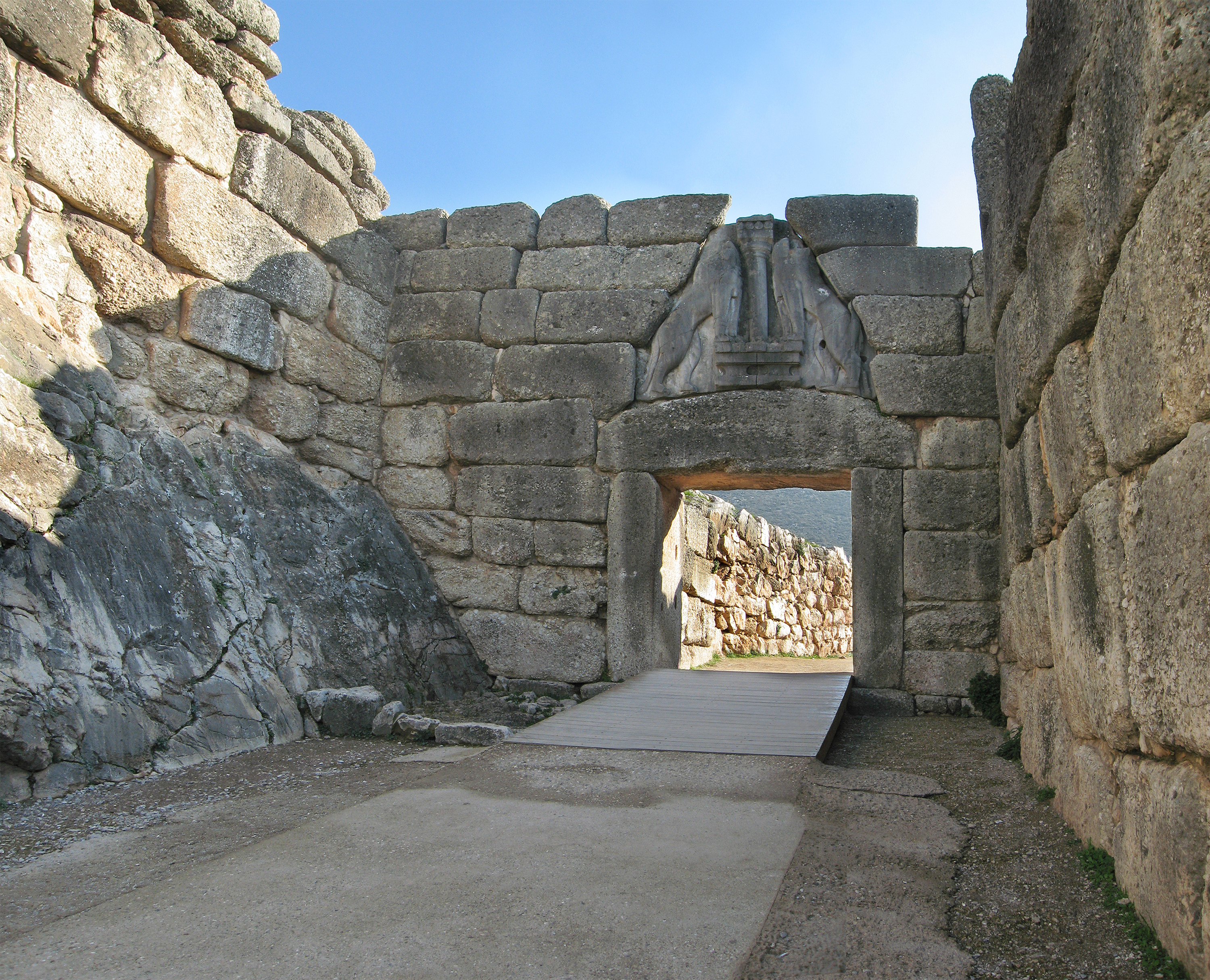|
Ormenius
Ormenium () was a town of ancient Thessaly, mentioned in the Catalogue of Ships in Homer's ''Iliad'', along with Hypereia and Asterium, as belonging to Eurypylus. In Greek mythology, it was said to have been founded by Ormenus, the grandson of Aeolus, and was the birthplace of Phoenix (a grandson of Ormenus). Strabo identifies this town with a place in Magnesia named Orminium, situated at the foot of Mt. Pelion near the Pagasaean Gulf, at the distance of 27 stadia from Demetrias, on the road passing through Iolcus, which was 7 stadia from Demetrias and 20 from Orminium. William Martin Leake, however, observes that the Ormenium of Homer can hardly have been the same as the Orminium of Strabo, since it appears from the situation of Asterium that Eurypylus ruled over the plains of Thessaliotis, which are watered by the Apidanus and Enipeus. The questioning of Strabo's equation of Ormenium with Orminium is still the norm among current scholars; some believing that, instead, Orm ... [...More Info...] [...Related Items...] OR: [Wikipedia] [Google] [Baidu] |
Catalogue Of Ships
The Catalogue of Ships (, ''neōn katálogos'') is an epic catalogue in Book 2 of Homer's ''Iliad'' (2.494–759), which lists the contingents of the Achaean army that sailed to Troy. The catalogue gives the names of the leaders of each contingent, lists the settlements in the kingdom represented by the contingent, sometimes with a descriptive epithet that fills out a half-verse or articulates the flow of names and parentage and place, and gives the number of ships required to transport the men to Troy, offering further differentiations of weightiness. A similar, though shorter, Catalogue of the Trojans and their allies follows (2.816–877). A similar catalogue appears in the Pseudo-Apollodoran ''Bibliotheca''. Historical background In the debate since antiquity over the Catalogue of Ships, the core questions have concerned the extent of historical credibility of the account, whether it was composed by Homer himself, to what extent it reflects a pre-Homeric document or memor ... [...More Info...] [...Related Items...] OR: [Wikipedia] [Google] [Baidu] |
Ancient Thessaly
Thessaly or Thessalia (Attic Greek: , ''Thessalía'' or , ''Thettalía'') was one of the traditional regions of Ancient Greece. During the Mycenaean Greece, Mycenaean period, Thessaly was known as Aeolia, a name that continued to be used for one of the major tribes of Greece, the Aeolians, and their dialect of Greek, Aeolic Greek, Aeolic. Geography At its greatest extent, ancient Thessaly was a wide area stretching from Mount Olympos, Mount Olympus to the north to the Spercheios Valley to the south. Thessaly is a geographically diverse region, consisting of Thessalian plain, broad central plains surrounded by mountains. The plains are bounded by the Pindos Mountains to the west, Mount Othrys to the south, the Pelion and Mount Ossa (Greece), Ossa ranges to the east, and Mount Olympos to the North. The central plains consist of two basins, the Larissa, Larisa basin and the Karditsa basin, drained by the Pineios (Thessaly), Pineios River into the Vale of Tempe. The Pagasetic Gulf in s ... [...More Info...] [...Related Items...] OR: [Wikipedia] [Google] [Baidu] |
Populated Places In Ancient Thessaly
Population is a set of humans or other organisms in a given region or area. Governments conduct a census to quantify the resident population size within a given jurisdiction. The term is also applied to non-human animals, microorganisms, and plants, and has specific uses within such fields as ecology and genetics. Etymology The word ''population'' is derived from the Late Latin ''populatio'' (a people, a multitude), which itself is derived from the Latin word ''populus'' (a people). Use of the term Social sciences In sociology and population geography, population refers to a group of human beings with some predefined feature in common, such as location, race, ethnicity, nationality, or religion. Ecology In ecology, a population is a group of organisms of the same species which inhabit the same geographical area and are capable of interbreeding. The area of a sexual population is the area where interbreeding is possible between any opposite-sex pair within the a ... [...More Info...] [...Related Items...] OR: [Wikipedia] [Google] [Baidu] |
Petra (Thessaly)
Petra (; "Rock"), originally known to its inhabitants as Raqmu (Nabataean Aramaic, Nabataean: or , *''Raqēmō''), is an ancient city and archaeological site in southern Jordan. Famous for its rock-cut architecture and water conduit systems, Petra is also called the "Rose City" because of the colour of the sandstone from which it is carved. The city is one of the New 7 Wonders of the World and a UNESCO World Heritage Site. The area around Petra has been inhabited from as early as 7000 BC, and was settled by the Nabataeans, a nomadic Arab people, in the 4th century BC. Petra would later become the capital city of the Nabataean Kingdom in the second century BC. The Nabataeans invested in Petra's proximity to the incense trade routes by establishing it as a major regional trading hub, which gained them considerable revenue. Unlike their enemies, the Nabataeans were accustomed to living in the barren deserts and thus were able to defend their kingdom. They were particularly sk ... [...More Info...] [...Related Items...] OR: [Wikipedia] [Google] [Baidu] |
Armenium
Armenium or Armenion () was a town of Pelasgiotis in ancient Thessaly, situated between Pherae and Larissa, near Boebeis Lake, said to have been the birthplace of Armenus, who accompanied Jason to Asia, and gave his name to the country of Armenia. It is hardly necessary to remark, that this tale, like so many others, arose from the accidental similarity of the names. There is conjecture that this town may be the same as that of Ormenium, but others equivocate or disagree. The site of Armenium is located near the modern site of Petra Petra (; "Rock"), originally known to its inhabitants as Raqmu (Nabataean Aramaic, Nabataean: or , *''Raqēmō''), is an ancient city and archaeological site in southern Jordan. Famous for its rock-cut architecture and water conduit systems, P .... References Populated places in ancient Thessaly Former populated places in Greece Pelasgiotis {{AncientThessaly-geo-stub ... [...More Info...] [...Related Items...] OR: [Wikipedia] [Google] [Baidu] |
Goritsa (Greece)
Goritsa is a hill and an archaeological site in Volos, Greece Greece, officially the Hellenic Republic, is a country in Southeast Europe. Located on the southern tip of the Balkan peninsula, it shares land borders with Albania to the northwest, North Macedonia and Bulgaria to the north, and Turkey to th ..., immediately east of the city centre. It was examined in the early 1970s by a Dutch team of archaeologists, revealing a planned ancient city with a regular street grid covering most of the hill. References Former populated places in Greece Populated places in ancient Thessaly Thessalian city-states Cities in ancient Greece Ancient Greek archaeological sites in Thessaly {{Greece-archaeology-stub ... [...More Info...] [...Related Items...] OR: [Wikipedia] [Google] [Baidu] |
Mycenaean Greece
Mycenaean Greece (or the Mycenaean civilization) was the last phase of the Bronze Age in ancient Greece, spanning the period from approximately 1750 to 1050 BC.. It represents the first advanced and distinctively Greek civilization in mainland Greece with its palatial states, urban organization, works of art, and writing system.. The Mycenaeans were mainland Greek peoples who were likely stimulated by their contact with insular Minoan Crete and other Mediterranean cultures to develop a more sophisticated sociopolitical culture of their own. The most prominent site was Mycenae, after which the culture of this era is named. Other centers of power that emerged included Pylos, Tiryns, and Midea in the Peloponnese, Orchomenos, Thebes, and Athens in Central Greece, and Iolcos in Thessaly. Mycenaean settlements also appeared in Epirus, Macedonia, on islands in the Aegean Sea, on the south-west coast of Asia Minor, and on Cyprus, while Mycenaean-influenced settlements appear ... [...More Info...] [...Related Items...] OR: [Wikipedia] [Google] [Baidu] |
Farsala
Farsala (), known in Antiquity as Pharsalos (, ), is a town in southern Thessaly, in Greece. Farsala is located in the southern part of Larissa (regional unit), Larissa regional unit, and is one of its largest settlements. Farsala is an economic and agricultural centre of the region. Cotton and livestock are the main agricultural products, and many inhabitants are employed in the production of textile. The area is mostly famous for being the birthplace of the mythical ancient Greek hero Achilles, and the site of a Battle of Pharsalus, major battle between Roman generals Gaius Julius Caesar and Gnaeus Pompeius Magnus in 48 BC. Geography Farsala lies at the southern edge of the Thessalian Plain, 4 km south of the river Enipeas (Thessaly), Enipeas. The Greek National Road 3 (Larissa - Lamia (city), Lamia) and the Greek National Road 30 (Karditsa - Volos) pass through the town. The Palaiofarsalos railway station (litt. "''Ancient Pharsalus''"), on the Piraeus–Platy railway, ... [...More Info...] [...Related Items...] OR: [Wikipedia] [Google] [Baidu] |
Enipeas (Thessaly)
The Enipeas () or Enipeus () is a river in central Greece, tributary of the Pineios near Farkadona. It is long. p. 12 Its source is in the northern part of , on the plateau of . Its course runs through several of the ''tetrades'' of ancient , from |
Thessaliotis
Thessaliotis () was one of the four districts into which ancient Thessaly was divided. The others were Pelasgiotis, Histiaeotis, and Phthiotis. Thessaliotis corresponded to the central plain of Thessaly and the upper course of the river Peneius, so called because it was first occupied by the Thessalian conquerors from Epirus. Its major towns were: Pharsalus (the most important), Peirasia, Phyllus, Metropolis, Cierium Cierium or Kierion () was a town and polis (city-state) in the district of Thessaliotis in ancient Thessaly, which according to some ancient commentators, such as Stephanus of Byzantium was the successor to the Homer, Homeric Arne (Thessaly), Arn ..., Euhydrium, and Thetidium. References Geography of ancient Thessaly {{AncientThessaly-geo-stub ... [...More Info...] [...Related Items...] OR: [Wikipedia] [Google] [Baidu] |




